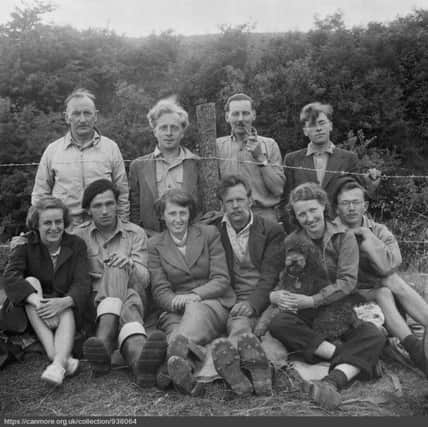Castle was used in time of Wallace and Bruce, excavations reveal


The Mote of Urr near Dalbeattie was excavated between 1951 and 1953, but the results have only now been published 65 years on.
Findings, published by GUARD Archaeology, show the construction and earliest occupation date to the late 12th century, with continued occupation over 200 years. The castle was in use during the Scottish Wars of Independence, when Wallace and Bruce and English King Edward I were known to be active in Dumfries and Galloway.
Advertisement
Hide AdAdvertisement
Hide AdThe earliest phase comprised the construction of the motte-and-bailey castle and its apparent destruction by fire, after which a large central stone-lined pit for an oven, furnace, kiln or beacon was dug. The pit continued in use when the motte was heightened in a second phase of occupation and enclosed by a clay bank and palisade. In its final phase, when the motte was heightened yet again, evidence for a possible double palisade enclosing the summit of the motte was found. A trench across the moat around the motte revealed three phases of the ditch and evidence for a timber bridge across the moat.
Prof Richard Oram of Stirling University, who carried out exhaustive historical investigation, said the lands of Urr changed ownership numerous times between the establishment of the motte in the twelfth century and its decline in the later post-medieval period.
“The identities of the owners of the site in the 13th and 14th centuries are only partly known historically. Urr was probably partly destroyed during the Wars of Independence in the early 14th century and there is a large gap in the documentary record for the latter part of the 14th and first half of the 15th centuries, by which time the estate was being rented out to tenant farmers.”
The excavation was carried out in the 1950s by archaeologist Brian Hope-Taylor.
Prof Barbara Crawford of the University of St Andrews said: “Brian Hope-Taylor was a charismatic and perspicacious scholar, though like some other archaeologists he did not find it easy to write up the results of his excavations for publication. It is with appreciation of Brian Hope-Taylor’s skills as an excavator of important medieval sites that I welcome this publication.”
